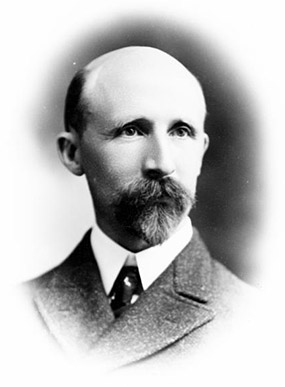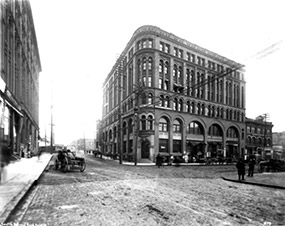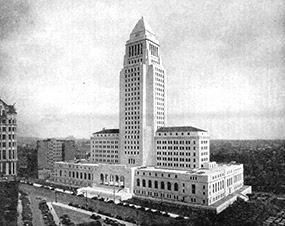
Alexander Hall was designed by English-trained John Parkinson, a leading Seattle architect of the period. Parkinson arrived in Seattle in 1889, about six months before the “Great Seattle Fire.” He designed area buildings as part of his own practice, and in a short-lived partnership with fellow Englishman Cecil Evers.
Parkinson designed Seattle Pacific University’s Alexander Hall in the Romanesque Revival style, which, along with the Queen Anne style, were dominant throughout North America between 1880 and 1900. Another significant example of the Romanesque Revival style which still exists in the Northwest today is the Parkinson-designed Seattle National Bank Building (now the Interurban Building), a sophisticated composition of tiered arches.
Among Parkinson’s other Seattle commissions were the Pontius Mansion, the Calkins Hotel, and some 32 structures for the Seattle Public Schools, including the B.F. Day School. He designed what would be the first buildings on two university campuses: Seattle Pacific University and Seattle University. Both Alexander Hall and the Garrand Building at SU were unreinforced masonry buildings with interior wood-frame structures.
Later, Parkinson moved to Los Angeles, where eventually his son joined him in practice. Their firm, Parkinson and Parkinson, completed many large and significant southern California projects, including the Los Angeles Memorial Stadium, Los Angeles City Hall, multiple buildings on the University of Southern California campus, and Union Station.

Seattle National Bank Building

Los Angeles City Hall